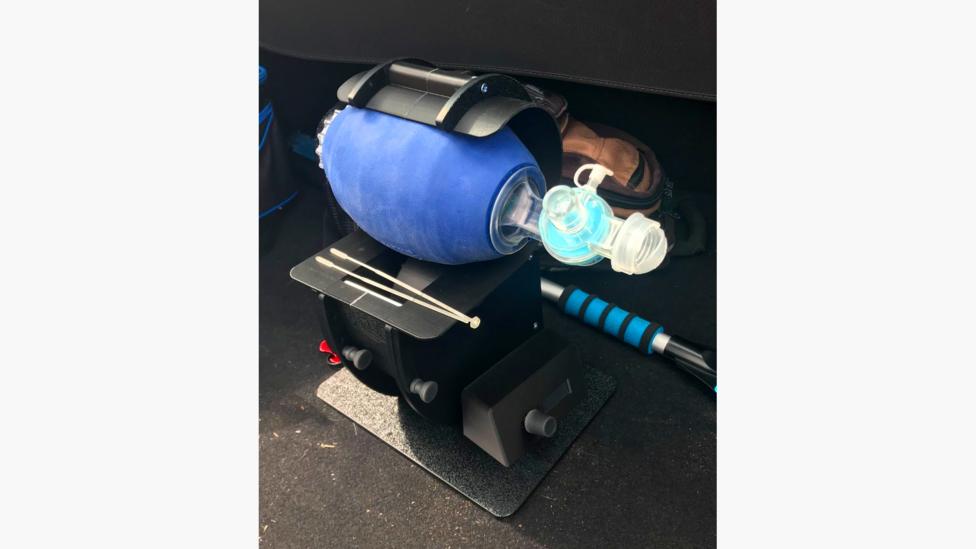Many innovators in India are working on this Ambu Bag deign with improvements as an alternate to expensive ventilator. Brief history of this product.


 A dozen ventilator prototypes at different stages have been developed in
March 2020 alone by teams in different countries – and organising on
Slack channels, Facebook groups, and GitHub repositories.Some of the most basic open-source ventilator models are based on an ‘ambu-bag’.
A dozen ventilator prototypes at different stages have been developed in
March 2020 alone by teams in different countries – and organising on
Slack channels, Facebook groups, and GitHub repositories.Some of the most basic open-source ventilator models are based on an ‘ambu-bag’.
The original bag-valve-mask concept was developed in 1953 by the German
doctor Holger Hesse and his partner Danish anesthetist Henning Ruben,
following their initial work on a suction pump. Their resuscitator,
named “Ambu” (Artificial Manual Breathing Unit), was manufactured and
marketed in 1956 by their company.


The Danish manufacturer, Testa Laboratory made the first commercially
produced Ambu bags in 1957. The company later changed its name to Ambu
International. Many other companies now also make self-inflating “bag
and mask” resuscitators, like the one shown here. These have become
standard equipment in ambulances, hospital emergency rooms, and patient
rooms.
 A dozen ventilator prototypes at different stages have been developed in
March 2020 alone by teams in different countries – and organising on
Slack channels, Facebook groups, and GitHub repositories.Some of the most basic open-source ventilator models are based on an ‘ambu-bag’.
A dozen ventilator prototypes at different stages have been developed in
March 2020 alone by teams in different countries – and organising on
Slack channels, Facebook groups, and GitHub repositories.Some of the most basic open-source ventilator models are based on an ‘ambu-bag’.
The results of this review, however, found that the tested and
peer-reviewed ventilator systems lacked complete documentation and that
the current open systems that were documented were either at the very
early stages of design or had undergone only early and rudimentary
testing. With the considerably larger motivation of an ongoing pandemic,
it is assumed these projects will garner greater attention and
resources to make significant progress to reach a functional and easily
replicated open source ventilator system. There is a large amount of
technical future work needed to move open source ventilators up to the
level considered adequate for scientific-grade equipment and further
work still to reach medical-grade hardware. Future work is needed to
achieve the potential of this approach not only on the technical side,
but also by developing policies, updating regulations and securing
funding mechanisms for the development and testing of open source
ventilators for both the current COVID19 pandemic, as well as for future
pandemics and for everyday use in low-resource settings.

No comments:
Post a Comment